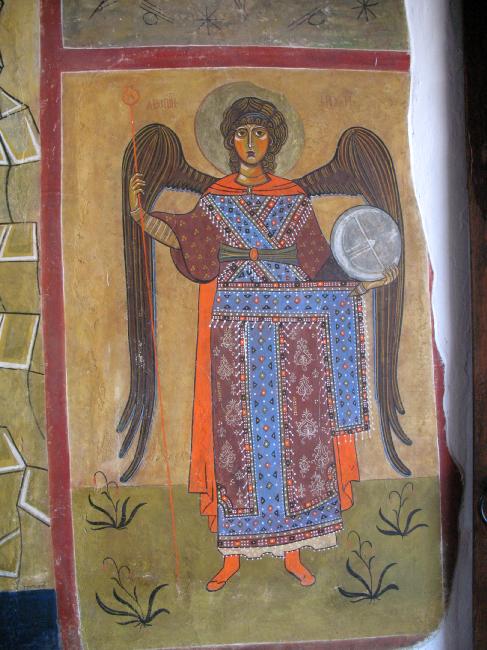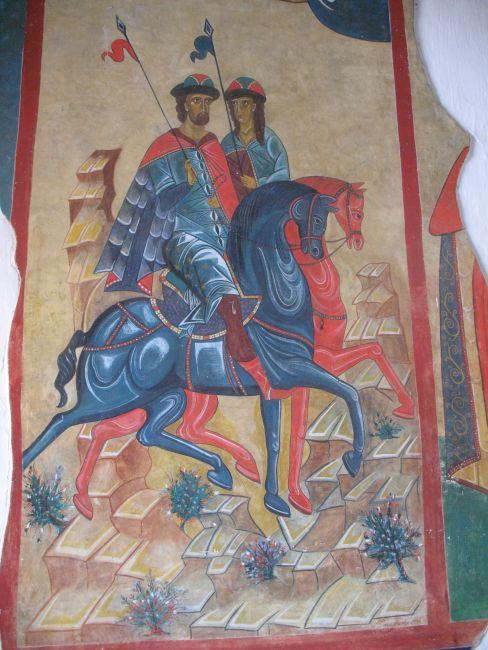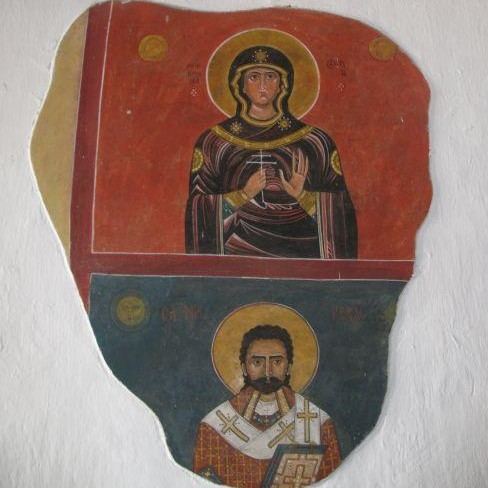Half-Serb, half-Chilean, Tatjana Popovic has spent most of her life in Mexico, a country that captivated her with its art, culture, color palette, and a very special vibe that is hard to articulate; a feeling one might describe as the spirit of the place.
From a young age, Tatjana has been fascinated by Byzantine art, which has become a significant source of inspiration for her own work. She creates murals, icons, and paintings that captivate viewers with their numerous historical references, vibrant colors, and inherent harmony.
Fine Art Shippers has had the pleasure of speaking with Tatjana Popovic about her rich and eventful life, her most significant projects, and the process of creating her art pieces.
Artist Talk: Tatjana Popovic on Bringing Byzantine Heritage to Mexico
You grew up at the intersection of the Serbian and Chilean cultures. Could you tell us more about it? How did it shape your perception of the world?
Tatjana Popovic: I was born in Belgrade, Serbia, to a Serbian father and a Chilean mother. In my childhood, I lived alternately in Belgrade and Santiago. My father was a journalist and the director of the Radio and Television of Yugoslavia for many years, and he traveled a lot interviewing presidents from all over the world. I often accompanied him, so, growing up, I got to know almost all of Latin America. Perhaps that's why it wasn't so difficult for me to adapt to life in Mexico when I moved there later.

How did your interest in Byzantine art and icon painting develop?
My father's family has a long-standing heritage in Belgrade, being one of the oldest families in the city. Throughout our lineage, there have been numerous monks and Orthodox patriarchs. Growing up, I was surrounded by Orthodox icons not only in my own house but also in the homes of friends. Our family has also been actively involved in supporting and providing aid for the restoration of damaged monasteries. Every Sunday, our family would gather at a centuries-old church that had been reconstructed by my great-grandfather. The church itself was a masterpiece, adorned with amazing frescoes and icons. These weekly visits nurtured my early fascination with religious art.
It is only natural that you chose art as your professional and life journey. How did this journey lead you to Mexico?
I pursued my studies in Fine Arts, specializing in painting, as well as Art History in Belgrade. During the summer breaks, I had the opportunity to work alongside my art teacher, Ivanka Zivkovic, who led a restoration team working in Orthodox monasteries throughout Serbia. It was during these experiences that I felt true and deep love and admiration for Byzantine art, even though I already had knowledge of it.
After completing my studies in Belgrade, I decided to come to Mexico to pursue a Master's degree in mural and oil painting. Along with me, I brought some icons and canvas copies of frescoes. When I started sharing these artworks with people around me, they were deeply moved by their beauty. At that time, very few people in Mexico knew about Byzantine art. This fueled my enthusiasm and passion to promote and spread awareness about this artistic tradition. I began by organizing exhibitions, and soon after, I started receiving contracts to create murals in private residences, restaurants, hotels, and churches.
How did you develop your unique artistic style?
Next year will mark my 50th year of painting. One's style develops, evolves, and improves over the years of artistic practice. My artistic foundation has always been rooted in Orthodox iconography, infused with a hint of Pre-Hispanic colors, resulting in my unique painting style.
How have Serbian and Latin American cultures blended in your art and influenced your artistic vision?
Although there are significant differences between South America and Mexico, South America is heavily influenced by Europe, particularly Spain, Italy, and Germany, which resulted in the almost complete extinction of indigenous roots. On the other hand, Central America, Peru, Colombia, Venezuela, Bolivia, and Mexico have deep-rooted pre-Hispanic cultures. Mexico possesses immense richness in architecture, reliefs, sculpture, mural painting, and pre-Hispanic ceramics. Its forms and vibrant colors are truly unique in the world. I believe that the aspect I've incorporated the most is the vibrant color palette, blending it with the classical colors of Byzantine iconography.
Could you share some restoration and painting projects that are particularly important to you?
I haven't been involved in restoration for a long time. Back in Serbia, the most significant project was the restoration of the Ramaca Monastery. After I finished my Master's degree, I focused on painting and restoration work. Over the years, I've painted numerous murals in various churches, but one that is especially dear to my heart is the Church of San Miguel Arcangel in Tepoztlan, where I live. The church's interior was in ruins, with no original murals left. After it underwent architectural restoration, I started painting the entire interior, a project that spanned several years. I am very proud of it; it gave me immense artistic satisfaction.

Your portfolio includes Byzantine, Prehispanic, Indian, and Japanese murals. Is this restoration work or original pieces? How do you approach the research aspect? Are there certain periods you specialize in?
I have had the opportunity to work on Prehispanic, Indian, Japanese, and Byzantine murals, among others. The type of work depends on the clients' requests. Some are original pieces, some are reproductions, some are inspired by specific sketches, and some are purely my own creations. The research process varies based on the project. For instance, if the work is for a church, I research when it was established and which saint it is dedicated to. This information helps determine the suitable iconography for the period and where each scene should be painted. Following that, I choose the appropriate pigments. I don't particularly specialize in any one era, but I hold a special affection for the 14th to 16th centuries, which I regard as the most splendid era of Byzantine art.
What role do you believe public art, like murals and frescoes, play in a community?
Public art is crucial as it has a significant influence on people. It’s very diverse, and it can convey various messages. Decorative murals, murals depicting the history of a place, and biblical scenes in churches are all important forms of public art. In addition to being artistic, they are also educational. Personally, I love all types of public art.
Can you share a bit about your process? How do you approach a new piece, from concept to completion?
When creating an icon, my first step is to decide what I want to paint at that moment. Once that's determined, I look for a suitable wooden panel and select natural pigments. Then, I prepare the panel and create the preliminary drawing. Next, I transfer the outline and begin the actual painting. At some point, it starts to guide you, as if the artwork itself becomes the artist. The process for creating frescoes is quite similar, with the exception that they are crafted on specially prepared walls. The completion of a work is a truly wonderful sensation, as it leaves a part of me embedded within it.
Interview by Inna Logunova
Photo courtesy of Tatjana Popovic
